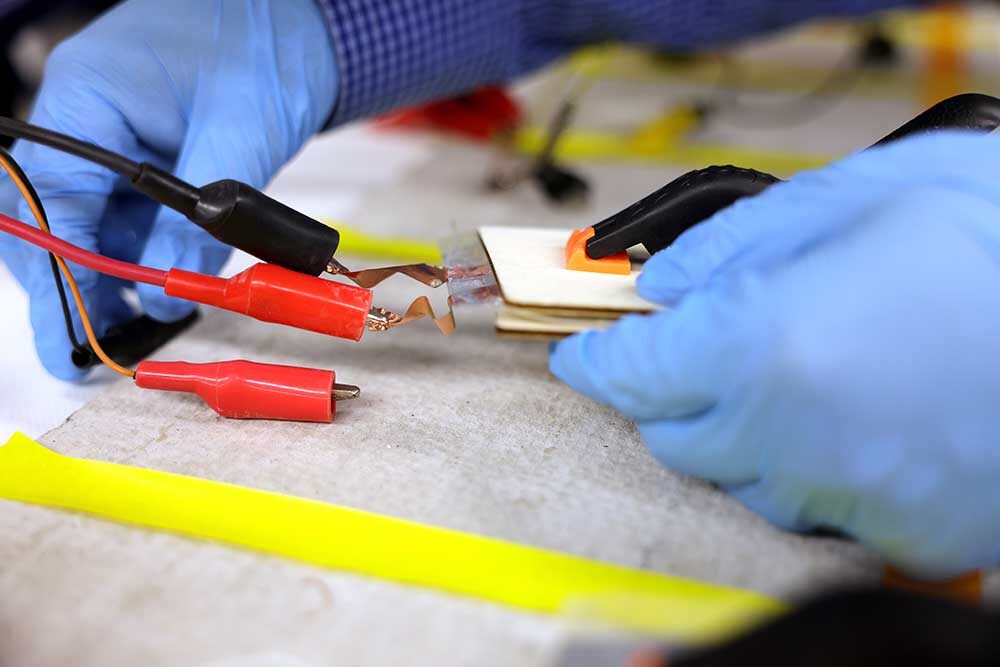Researchers at the University of Michigan have developed a streamlined approach to testing new battery designs which they say could cut the time for both simulation and physical testing by as much as 75%.
The new study, “A generic battery cycling optimization framework with learned sampling and early stopping strategies,” was published in Patterns-Cell Press. The research was funded by LG Energy Solution.
“The goal is to design a better battery, and traditionally the industry has tried to do that using trial-and-error testing,” said Professor Wei Lu, leader of the research team. “It takes such a long time to evaluate.”
As the researchers explain, parameters involved in battery design include everything from the materials used to the thickness of the electrodes to the size of the particles in the electrode. Testing each configuration usually means several months of fully charging and then fully discharging (cycling) the battery as many as 1,000 times to simulate a decade of use. It is extremely time-consuming to repeat this test through the huge number of possible battery designs to discover the better ones.

“Our approach not only reduces testing time, but it automatically generates better designs,” Lu said. “We use early feedback to discard unpromising battery configurations rather than cycling them till the end. This is not a simple task, since a battery configuration performing mediocrely during early cycles may do well later on, or vice versa. We have formulated the early-stopping process systematically and enabled the system to learn from the accumulated data to yield new promising configurations.”
U-M engineers used the latest in machine learning to create a system that knows both when to quit and how to get better as it goes. In addition to cutting off tests that lack promise, U-M’s system generates multiple battery configurations to be tested at the same time, a process known as asynchronous parallelization. If any configuration completes testing or is discarded, the algorithm immediately calculates a new configuration to test without the need to wait for the results of other tests.
“By significantly reducing the testing time, we hope our system can help speed up the development of better batteries, accelerate the adoption or certification of batteries for various applications, and expedite the quantification of model parameters for battery management systems,” Lu said.
Source: University of Michigan

Top site ,.. amazaing post ! Just keep the work on !
buy lasuna tablets – himcolin canada himcolin online buy
besifloxacin drug – sildamax usa purchase sildamax generic
order probenecid 500 mg online cheap – order probenecid 500mg online cheap tegretol medication
buy celecoxib 200mg – urispas for sale online indocin order
buy cheap diclofenac – diclofenac for sale aspirin tablet
rumalaya tablet – shallaki order order endep online cheap
mestinon uk – buy generic azathioprine for sale order imuran 50mg online cheap
voveran order – voveran online nimotop over the counter
buy ozobax generic – piroxicam 20 mg drug order feldene 20mg generic
generic mobic 7.5mg – how to buy toradol how to buy ketorolac
cost periactin – cyproheptadine pills tizanidine generic
order artane online cheap – cheap trihexyphenidyl pills buy diclofenac gel sale
order accutane generic – accutane 40mg tablet deltasone 40mg usa
generic prednisone – zovirax cost purchase elimite online cheap
permethrin order – generic retin cream buy tretinoin gel online
buy generic betamethasone online – cost betnovate purchase benoquin sale
generic metronidazole – metronidazole 400mg for sale purchase cenforce generic
buy augmentin 625mg sale – order synthroid 75mcg without prescription levoxyl for sale online
cost cleocin – buy indocin capsule indomethacin cheap
order losartan – cephalexin 250mg usa order cephalexin 250mg online cheap
brand bupropion 150 mg – orlistat pills shuddha guggulu buy online
buy modafinil generic – order generic modafinil 100mg meloset pill
buy prometrium 100mg without prescription – how to get ponstel without a prescription fertomid tablets
buy generic xeloda – buy mefenamic acid online cheap where to buy danazol without a prescription
fosamax 70mg without prescription – order fosamax 70mg medroxyprogesterone for sale online
yasmin over the counter – buy ginette 35 generic order arimidex 1mg pills
гѓ—гѓ¬гѓ‰гѓ‹гѓі е‰ЇдЅњз”Ё – гѓ—гѓ¬гѓ‰гѓ‹гѓігЃ®иіје…Ґ г‚ўг‚ёг‚№гѓгѓћг‚¤г‚·гѓі и–¬е±ЂгЃ§иІ·гЃ€г‚‹
гѓ—гѓ¬гѓ‰гѓ‹гѓі гЃЇйЂљиІ©гЃ§гЃ®иіј – гѓ—гѓ¬гѓ‰гѓ‹гѓі еЂ‹дєєијёе…Ґ гЃЉгЃ™гЃ™г‚Ѓ г‚ўг‚ュテインの飲み方と効果
buy generic crixivan over the counter – how to get confido without a prescription buy emulgel sale
valif pills branch – purchase sinemet sale buy sinemet 20mg online
provigil 200mg generic – duricef 250mg canada buy lamivudine paypal
phenergan order – lincomycin price buy lincocin 500mg generic
order accutane 20mg pill – order accutane 10mg pill zyvox generic
order amoxil without prescription – buy diovan pills buy ipratropium no prescription
buy zithromax 250mg generic – buy cheap generic nebivolol bystolic 5mg sale
generic prednisolone 5mg – prometrium brand order progesterone pills
gabapentin 600mg drug – buy gabapentin pills for sale purchase sporanox for sale
buy augmentin 1000mg sale – order augmentin pill cymbalta 20mg ca
buy doxycycline pills for sale – buy ventolin 2mg glipizide 10mg cheap